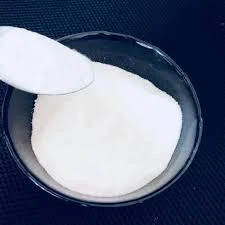
ຕ.ລ. . 30, 2024 12:24 Back to list
construction hpmc
The Role of HPMC in Modern Construction
Hydroxypropyl Methylcellulose (HPMC) has emerged as a key additive in the construction industry, particularly known for its versatility and functionality in various applications. This non-ionic cellulose ether is derived from natural cellulose and undergoes a series of modifications to harness its properties, making it an integral component in the formulation of construction materials.
The Role of HPMC in Modern Construction
Moreover, HPMC contributes to the water retention capability of construction materials. In environments where moisture levels can fluctuate drastically, HPMC helps maintain the moisture content in mortars and other mixtures. This property is crucial for ensuring that the curing process is uniform, which ultimately enhances the strength and durability of the finished product. Without adequate moisture retention, materials can dry too quickly, leading to cracks and reduced structural integrity.
construction hpmc

Another noteworthy advantage of HPMC is its ability to modify the viscosity of construction mixtures. By adjusting the viscosity, contractors can tailor the application behavior of the product according to specific needs. For instance, thicker mixtures might be preferable for vertical applications to prevent slumping, while a thinner consistency may be necessary for easier spreadability on horizontal surfaces.
Furthermore, HPMC is recognized for its compatibility with various other additives, making it a versatile choice for different construction contexts. It can be easily blended with other polymers and binders, creating composite materials that exhibit enhanced performance. This adaptability allows engineers and architects to innovate new materials that meet the evolving demands of modern construction.
In addition to its mechanical properties, HPMC is also regarded for its environmentally friendly attributes. As a biodegradable compound, it aligns well with the increasing emphasis on sustainability within the construction industry. The trend toward eco-friendly materials has led to a growing adoption of HPMC formulations, especially in green building projects.
In conclusion, Hydroxypropyl Methylcellulose represents a significant advancement in construction technology, providing essential benefits such as enhanced workability, moisture retention, and compatibility with other materials. Its unique properties not only facilitate construction processes but also contribute to the development of sustainable and resilient building practices, positioning HPMC as a vital component in the future of construction.
-
Unlocking the Benefits of HPMC Products: A Gateway to Versatile Applications
NewsAug.07,2025
-
Tile Bonding Cellulose: The Key to Superior Adhesion and Durability
NewsAug.07,2025
-
Hydroxypropyl Methylcellulose Powder: The Versatile Component in Modern Pharmaceuticals
NewsAug.07,2025
-
Hydroxyethyl Cellulose: The Versatile Solution for Various Industries
NewsAug.07,2025
-
Hydroxyethyl Cellulose (HEC): The Versatile Polymer for Various Applications
NewsAug.07,2025
-
The Ultimate Guide to Mortar Bonding Agent
NewsAug.06,2025







